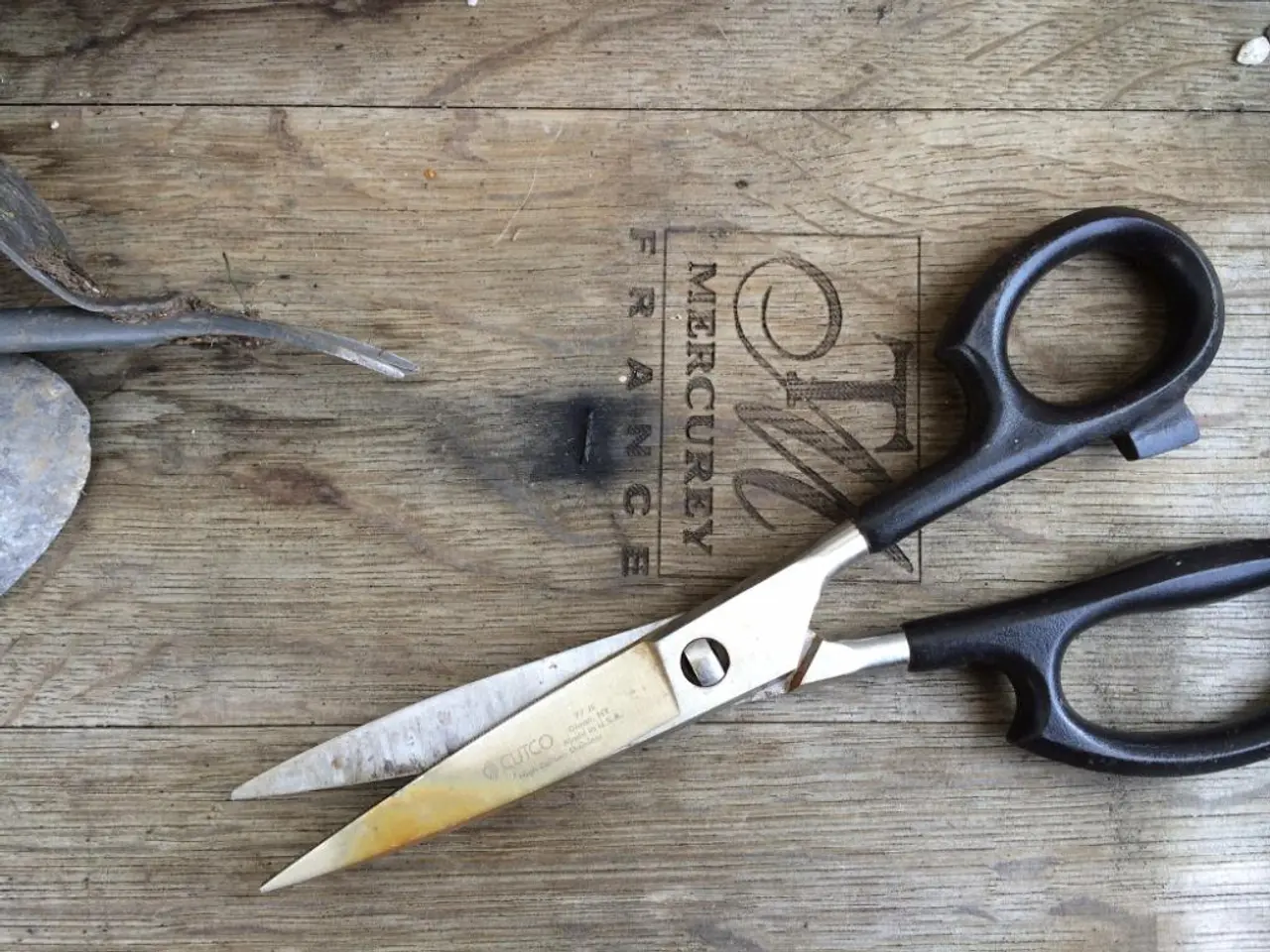Mastering the Art of Bonsai Trimming with Scissors: Perfecting Your Pruning Skills and Achieving Precision
In the artful world of bonsai, precision and control are essential when shaping twig ends to create a harmonious balance. With robust scissors designed for handling thicker branches, practitioners can refine the overall structure and silhouette of their trees with ease.
Sharp, clean scissors are vital for making precise cuts, preventing disease spread, and promoting healthy growth in bonsai trees. To keep scissors in top condition, it's essential to maintain and care for them regularly, including cleaning, lubrication, sharpening, and storing them in a protective case or pouch.
The best techniques for using bonsai scissors focus on care, accuracy, and understanding your bonsai’s growth patterns. Start by keeping scissors clean and sharp, as sharp, fine blades are essential for making clean, precise cuts without crushing or damaging delicate branches and leaves.
Choosing the right branches is the next step. Identify which branches or foliage disrupt the tree’s symmetry or health, and remove dead or yellowing parts first to promote healthy growth. Make clean cuts at strategic points, always cutting just above a leaf node, branch fork, or bud, encouraging new growth from that site and preserving the tree’s natural shape.
Use finesse and small snips when trimming, as bonsai scissors are designed for detailed work. Avoid large cuts; instead, take small amounts off gradually to maintain the overall aesthetic and avoid stressing the plant. Maintaining balance and symmetry is crucial when shaping, so focus on maintaining a balanced structure by trimming branches that disrupt harmony.
Aftercare is important post-trimming. Provide proper watering, light, and humidity to help your bonsai recover from pruning shock. Special considerations should be made for delicate species like ficus, where pruning leaves back to two leaves after six to eight have grown can encourage denser foliage. When pruning larger wounds, apply cut paste to prevent disease.
Creative applications for bonsai scissors abound, including intricate foliage designs, dramatic branch restructuring, micro-pruning, and seasonal styling. As the practitioner's hands move deftly, the tree begins to reveal its hidden beauty. The meditative process of bonsai pruning cultivates a sense of mindfulness and connection with nature.
Safety precautions when using bonsai scissors include wearing protective gloves, maintaining a stable work surface, and keeping fingers away from the blades. Common pruning mistakes to avoid include over-pruning, cutting without a clear vision, leaving stubs, pruning at the wrong time, and not maintaining scissors.
By mastering the art of bonsai pruning with scissors, one can coax tiny limbs into harmonious balance, revealing the tree's hidden beauty. Understanding the unique characteristics and applications of curved, straight, and specialized scissors, as well as the purpose of five essential pruning cuts, is essential for achieving ideal results. In summary, precise trimming with bonsai scissors requires clean, sharp blades, cutting above growth nodes, gradual small cuts, and thoughtful branch selection to guide the tree’s artistic shape while maintaining health.
To maintain the precision and control necessary for bonsai gardening, it's crucial to keep scissors clean, sharp, and in top condition. While nurturing a bonsai tree, one should use these scissors to make precise cuts, encouraging healthy growth and promoting intricate designs, such as shaping branch structures or creating detailed foliage patterns in the home-and-garden setting.




